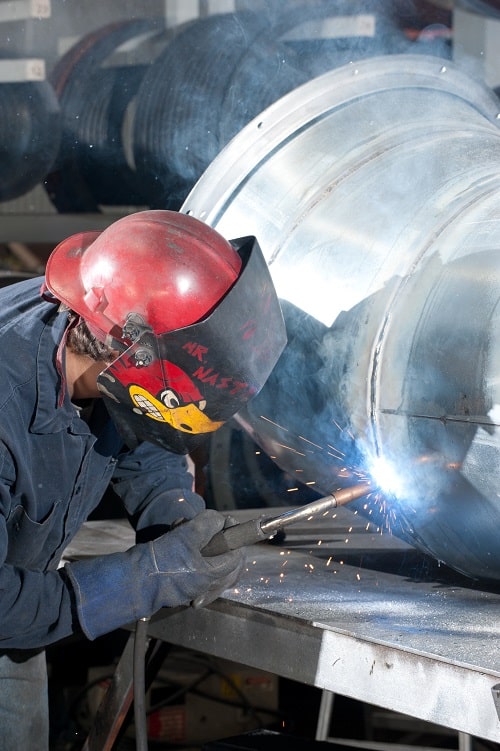Weld fumes and metal dust exposure limits aren’t usually something a manufacturer thinks about when in production. Do you know what the limits are? While most people probably don’t have time to memorize the numbers, here’s a quick test:
Which metal in the following list is the most dangerous as far as exposure time?
- Chromium
- Nickel
- Aluminum
- Zinc
- Manganese
How well did you think you did?
All of these metals can be found in welding and metal working dust and fumes. Aluminum irritates the respiratory system. Nickel not only irritates the respiratory system, but also the eyes and skin. Manganese is an irritant, but can also cause central nervous system problems and damage the nerve cells.

If you guessed Chromium, you were correct! This metal has the lowest exposure tolerances in dust and fumes. Hexavalent chromium is known to increase the risk of cancer even with limited exposure. It also causes immediate damage to eyes, lungs, and skin. Even worse, hexavalent chromium is found in chrome alloys, including stainless steel. Welding or cutting these alloys without proper fume and dust collection equipment puts your workers at risk of exposure.
Even if hexavalent chromium isn’t among your weld fumes worries, manganese and other metals commonly found in welding materials are still a hazard. Some alloys contain dangerous metals like beryllium, cobalt, or cadmium. More information on the hazards of metal dust and weld fumes can be found here: OSHA FACTS
Find out HERE how a dust collection system designed by Imperial Systems can protect your workers from all of these harmful metals. Protect your business from citations and fines by calling 800-918-3013!
Related blog post: Welding Fumes and Cancer: The New Research Will Surprise You


